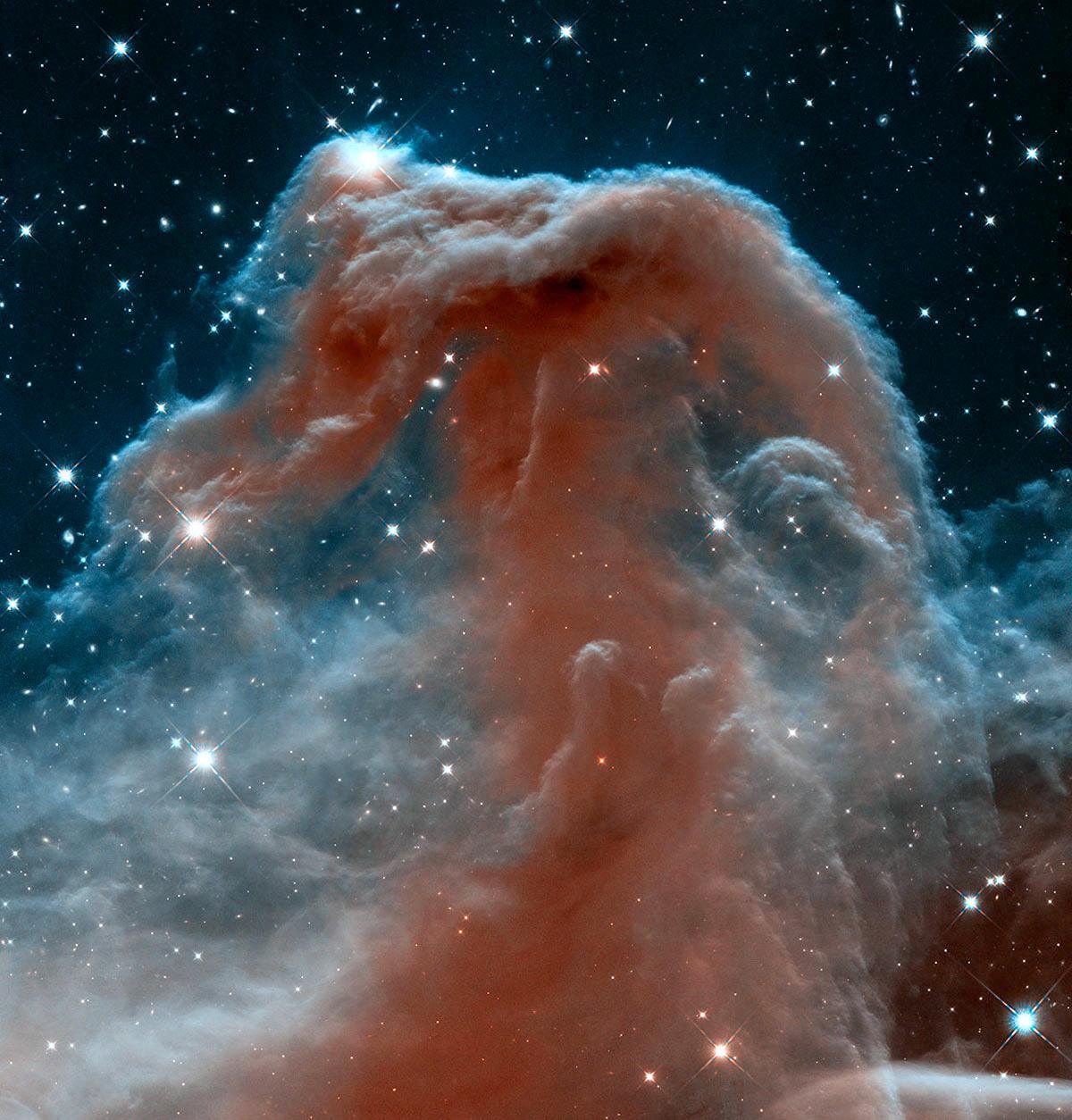The Carina Nebula, the home of Eta Carinae, shows star birth in a new level of detail.
The fantasy-like landscape of the nebula is sculpted by the action of outflowing winds and scorching ultraviolet radiation from the monster stars that inhabit this inferno. In the process, these stars are shredding the surrounding material that is the last vestige of the giant cloud from which the stars were born.
The immense nebula is an estimated 7,500 light-years away in the southern constellation Carina the Keel.
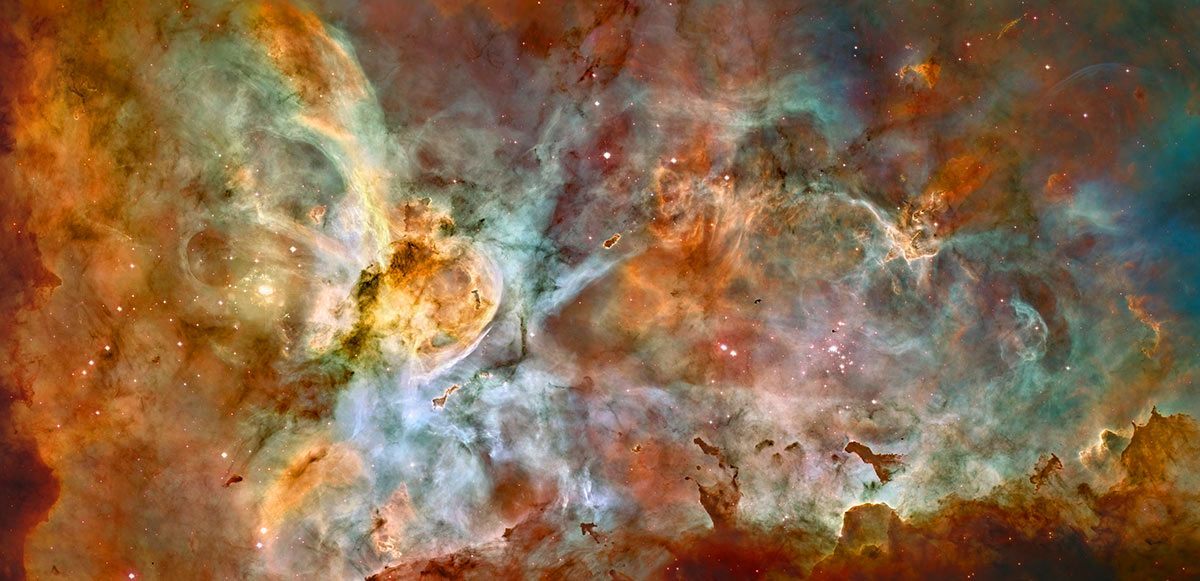
Mystic Mountain
Another part of the Carina Nebular shows a craggy fantasy mountaintop enshrouded by wispy clouds. This Hubble Space Telescope image captures the chaotic activity atop a pillar of gas and dust, three light-years tall, which is being eaten away by the brilliant light from nearby bright stars. The pillar is also being assaulted from within, as infant stars buried inside it fire off jets of gas that can be seen streaming from towering peaks.
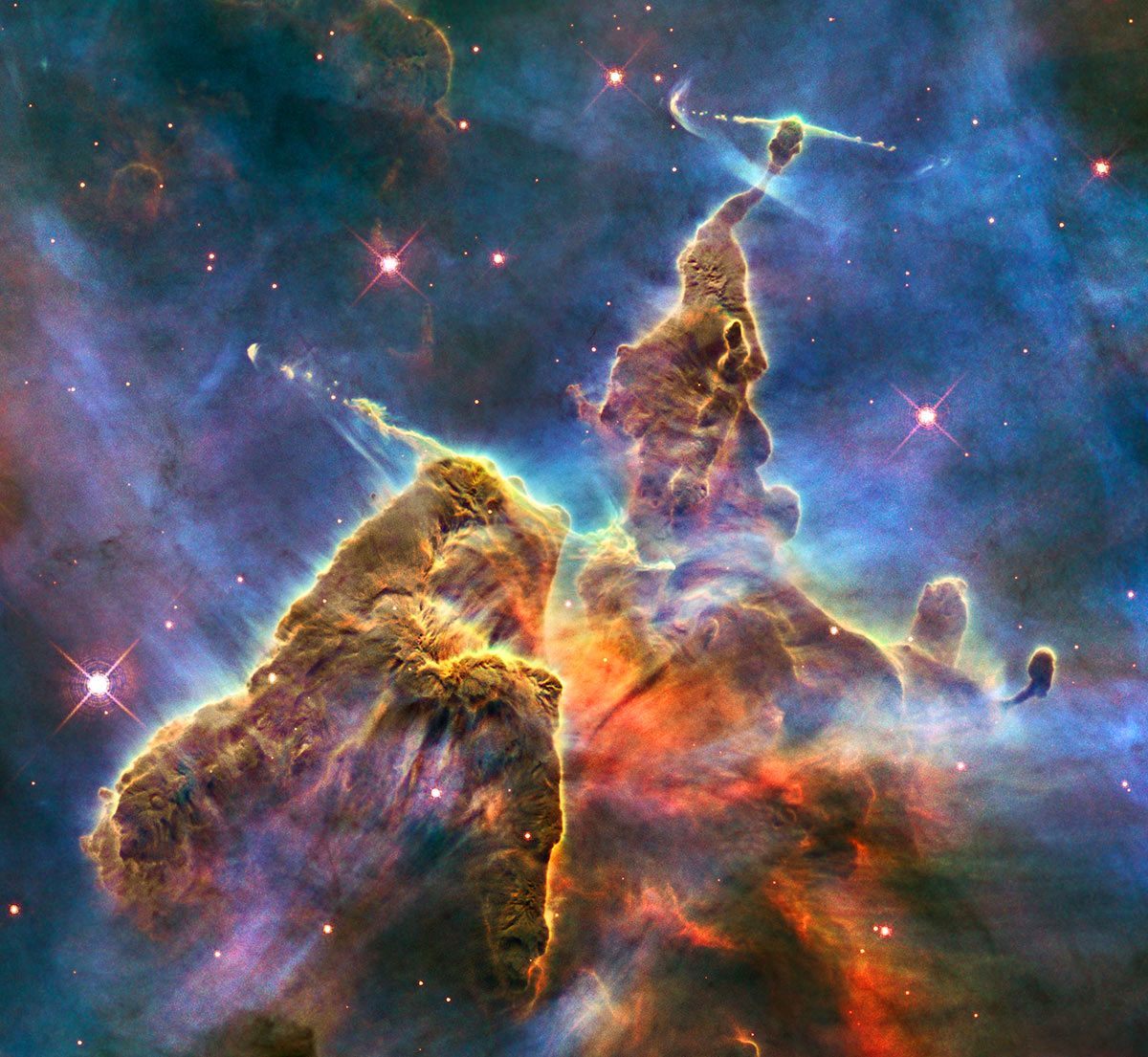
A cosmic rose: interacting galaxies
Two misshapen spiral galaxies combine to form a beautiful celestial flower in this image of Arp 273 released to celebrate the 21st anniversary of the launch of the Hubble Space Telescope.
The gravitational attraction between these two galaxies has created their physical distortions. It is thought that the smaller galaxy has actually passed through the larger one.
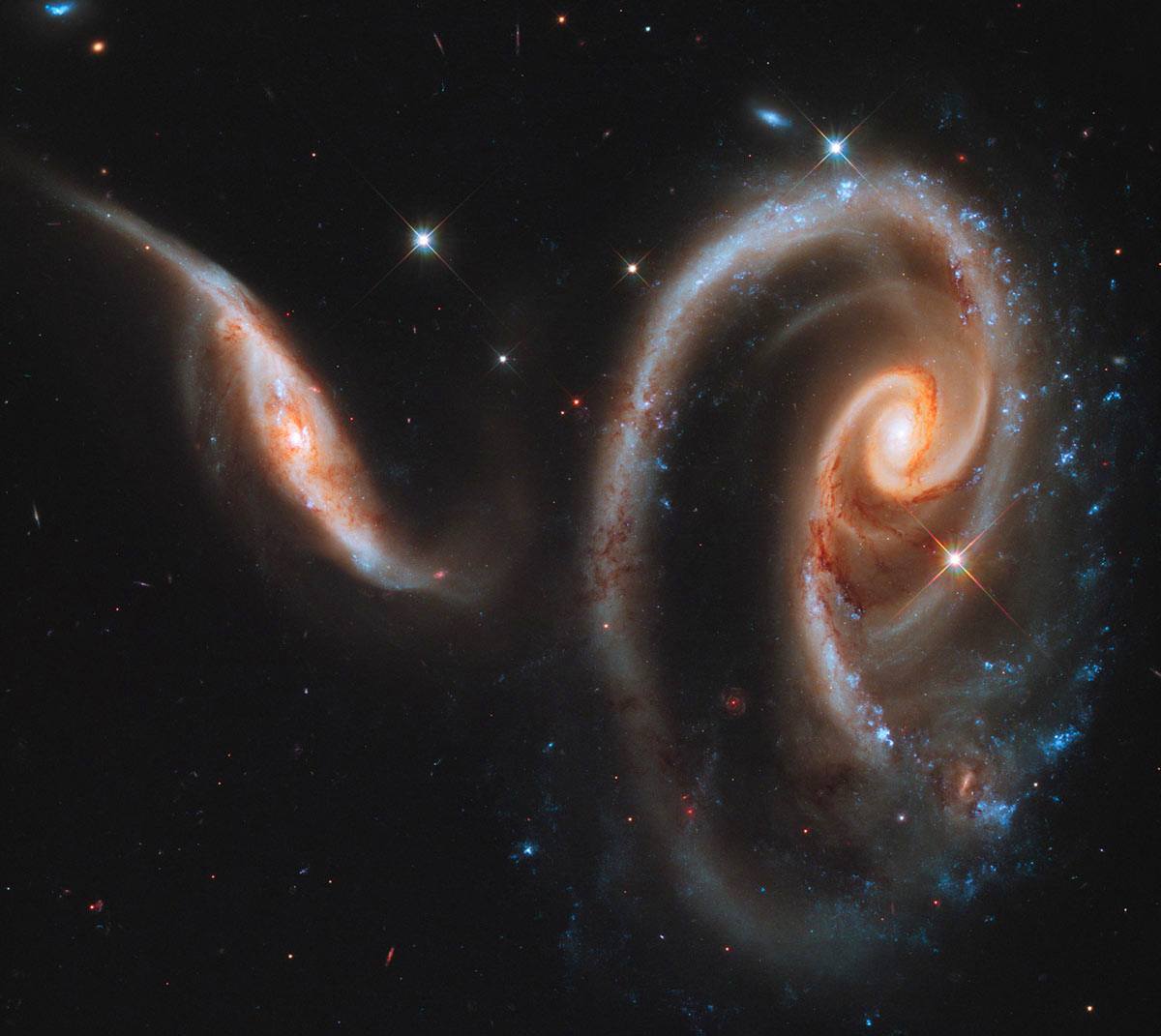
Messier 101 (M101)
One of the largest and most detailed photo of a spiral galaxy, Messier 101 (M101) ever been released from Hubble.
The galaxy’s portrait is actually composed of 51 individual Hubble exposures, in addition to elements from images from ground-based photos. The final composite image measures a whopping 16,000 by 12,000 pixels.
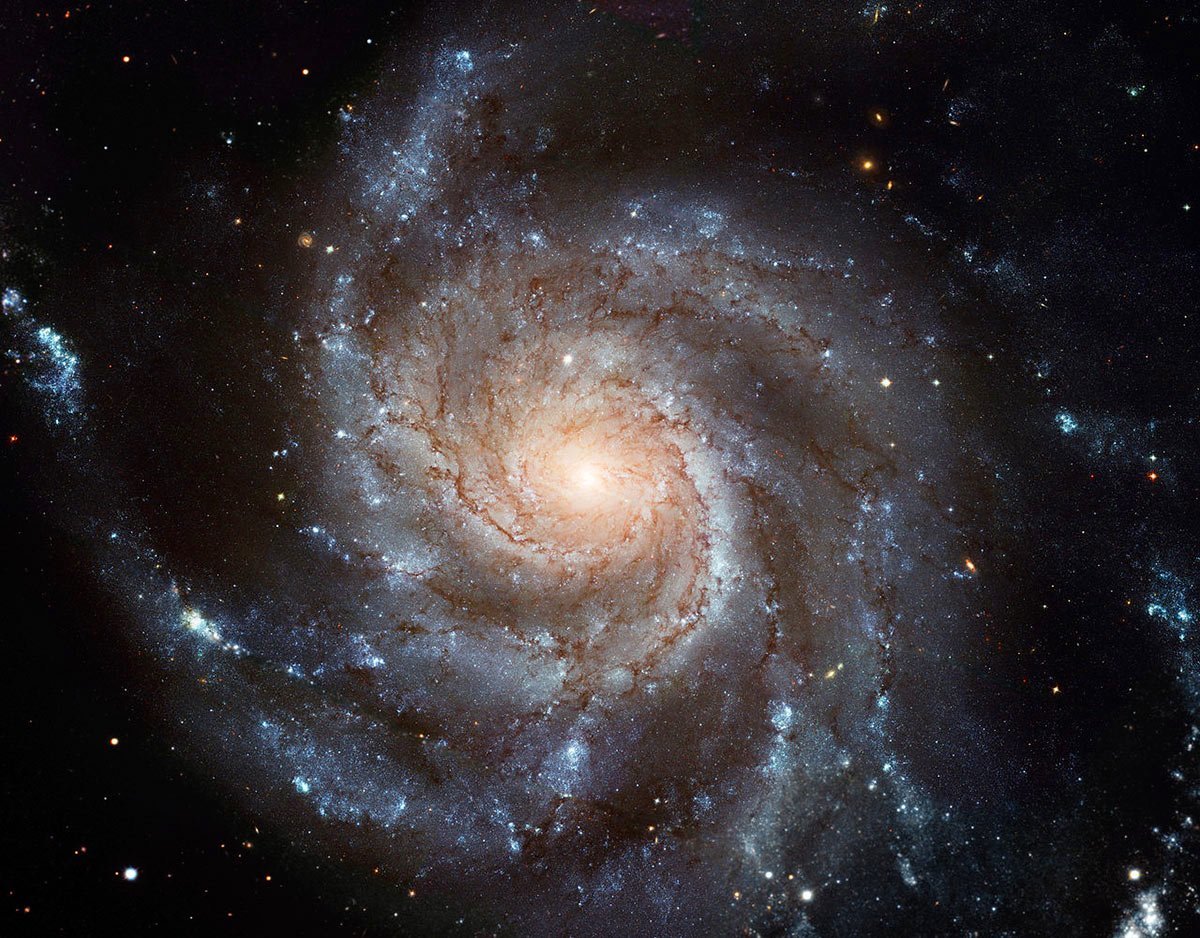
Erupting star
This is the first in a sequence of four pictures from the Hubble Space Telescope’s Advanced Camera for Surveys that captures dramatic changes during a stellar outburst in January 2002. The image was taken December 17, 2002.
The image is combined from exposures taken through blue (B), green (V), and infrared (I) filters.
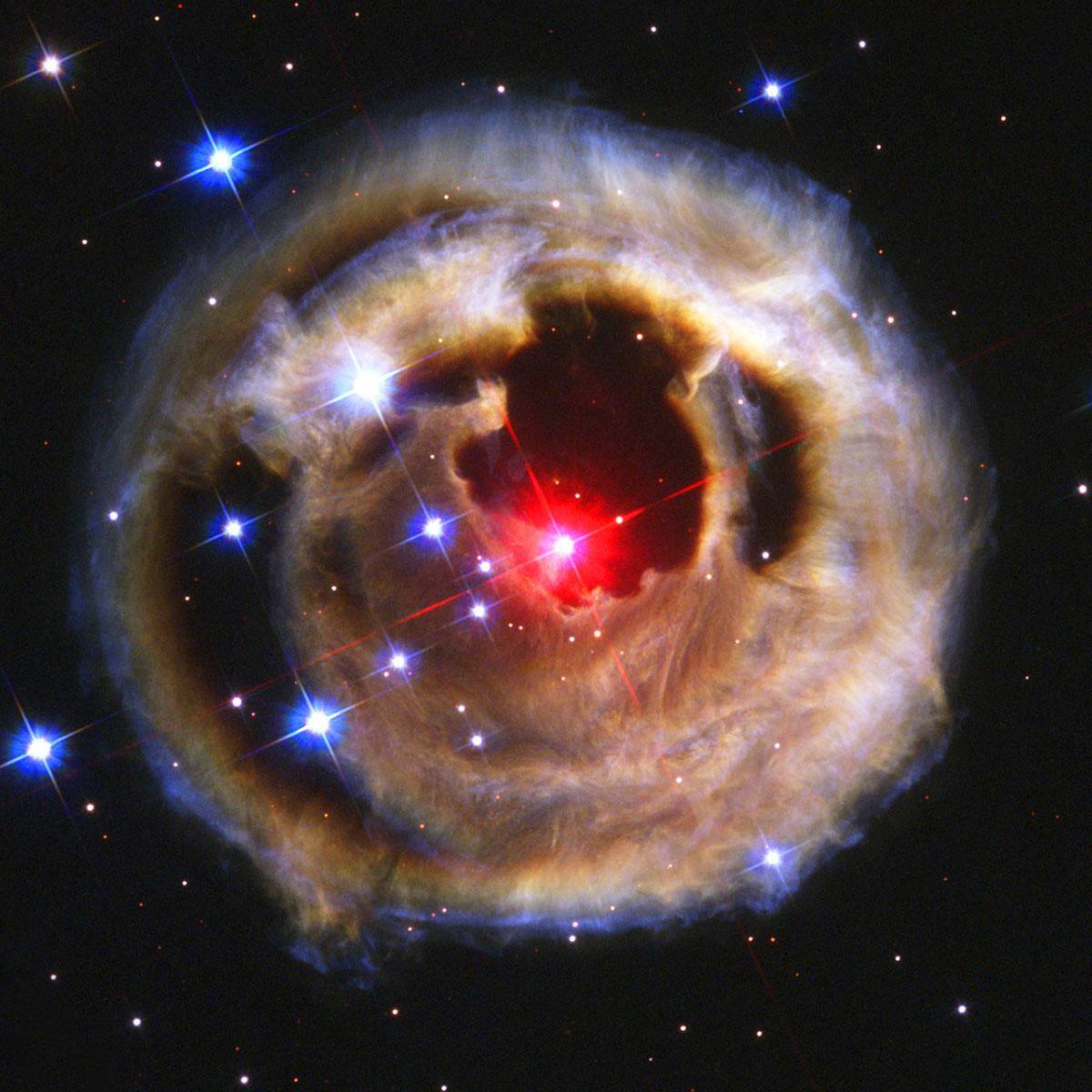
Galactic wreckage: Stephan’ Quintet
Named after French astronomer Édouard Stephan, Stephan’s Quintet was photographed by the new Wide Field Camera 3 (WFC3). Stephan’s Quintet, also known as the Hickson Compact Group 92, is a group of five galaxies, but one member of the quintet is actually much closer to us than the others.
The imposter is easy to pick out because it looks different than the others in this image.
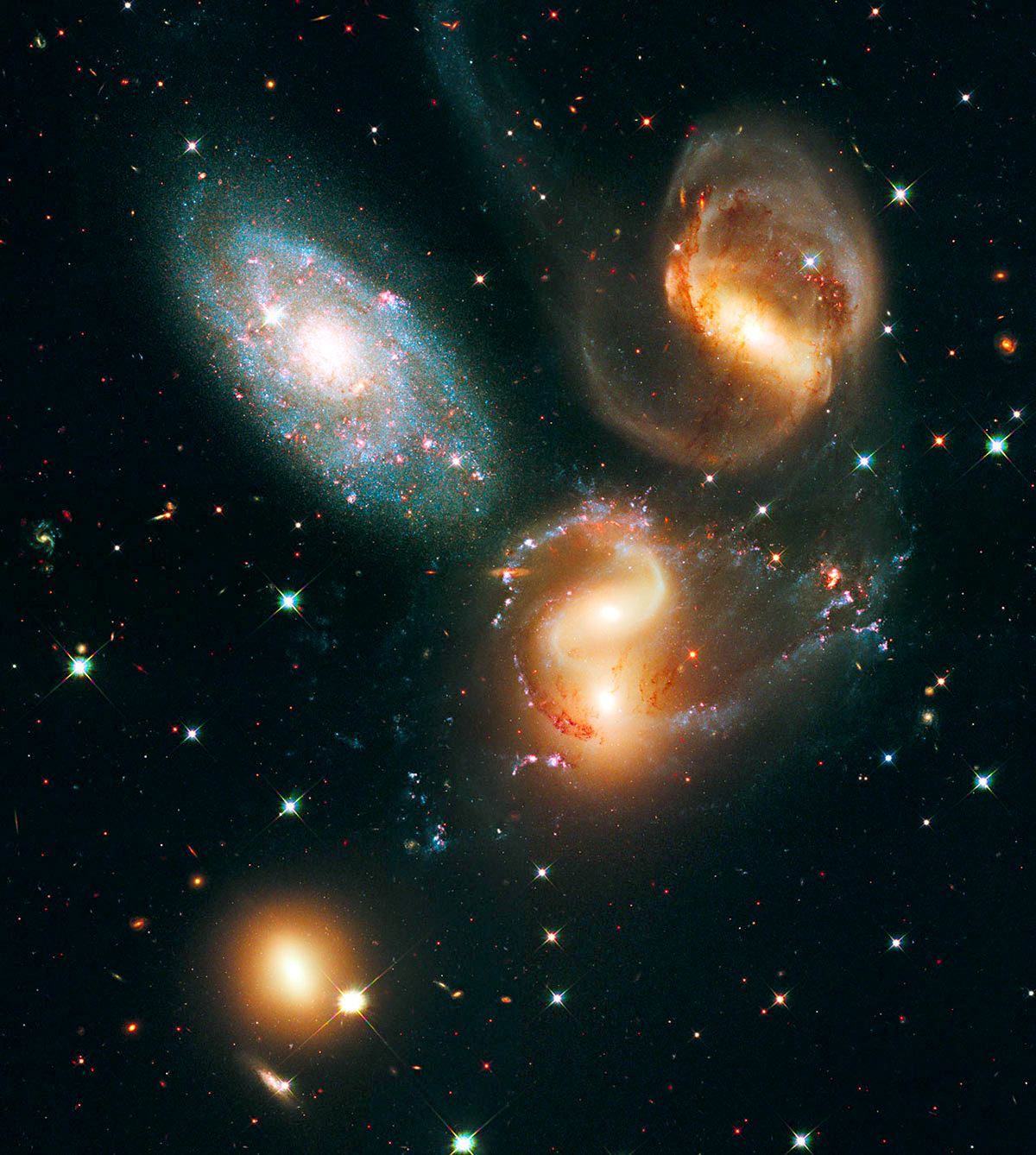
Horsehead Nebula
The iconic Horsehead Nebula in the constellation Orion has graced astronomy books ever since its discovery over a century ago. This image highlights infrared wavelengths, giving the nebula a more ethereal look than more traditional, and shadowy, visible wavelength views.
